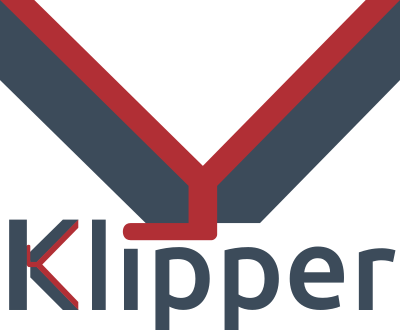Klipper vs. Marlin: A Comparative Overview of 3D Printer Firmwares
Klipper

What is Klipper?
Klipper is a 3D printer firmware that combines the computational power of a Raspberry Pi (or similar device) with the high-speed capability of microcontrollers. Instead of doing all computations on the microcontroller, Klipper splits the task between the microcontroller and the Raspberry Pi.
Brief History
Klipper was developed by Kevin O'Connor with the goal of overcoming limitations faced by traditional 3D printer firmwares by offloading complex computations onto more capable hardware.
Technical Details
- Host-Driven Computation: The Raspberry Pi does the bulk of the computation, sending only the necessary step pulses to the microcontroller.
- High Precision Stepper Timing: Capable of producing high-quality prints by achieving precise stepper motor timings.
- Flexible Configuration: Uses simple configuration files, making it easy to set up and modify printer parameters.
Official Klipper Site
How Does It Differ from Marlin?
- Computation Approach: Unlike Marlin, Klipper offloads tasks to more powerful external hardware.
- Configuration Method: Uses plain text configuration files instead of modifying and compiling source code.
- Expandability: Klipper is designed to control multiple microcontrollers, offering potential for further expansion.
Marlin

What is Marlin?
Marlin is an open-source firmware for 3D printers. It runs directly on the printer's microcontroller and provides all the logic and control for the printer, from interpreting G-code to controlling stepper motors and heaters.
Brief History
Initially developed in 2011 by Erik van der Zalm, Marlin quickly became the go-to firmware for many DIY 3D printer enthusiasts and is now used as the base firmware for many commercial 3D printers.
Technical Details
- Platform Support: Supports a wide range of 3D printer architectures and microcontrollers.
- Feature-Rich: Provides numerous features, including bed leveling, thermal protection, and advanced motion planning.
- Highly Configurable: Through the modification of a
Configuration.hfile, users can tailor Marlin to the specifics of their printer.
Official Marlin Site
How Does It Differ from Klipper?
- All-in-One Solution: Marlin runs entirely on the printer's microcontroller without requiring an external computational device.
- Configuration: Marlin requires source code modifications for configuration changes, followed by firmware flashing to the microcontroller.
- History & Adoption: Being older, Marlin has seen widespread adoption and has a larger community.
In Comparison
Both Klipper and Marlin have their own strengths and user bases. While Marlin provides an all-in-one solution deeply ingrained in the 3D printing community, Klipper introduces innovative approaches to printer control by leveraging the power of external computing.
For those interested in deep dives, video tutorials, and detailed discussions, exploring the respective communities and YouTube can provide a wealth of knowledge.